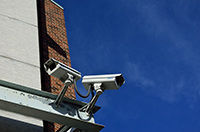 When it comes to piracy through web torrents, the truth is that you’re probably never going to go to jail for it. A handful of private downloaders have been hit with heavy penalties in order to make an example of them, but the government simply does not have the resources to go after everyone on the internet who’s guilty of piracy (hint: That’s very close to 100% of us). The real risk you run when downloading something you haven’t purchased is having your service interrupted, throttled, or even dropped by your provider.
When it comes to piracy through web torrents, the truth is that you’re probably never going to go to jail for it. A handful of private downloaders have been hit with heavy penalties in order to make an example of them, but the government simply does not have the resources to go after everyone on the internet who’s guilty of piracy (hint: That’s very close to 100% of us). The real risk you run when downloading something you haven’t purchased is having your service interrupted, throttled, or even dropped by your provider.
How Do They Do It?
ISP’s do look for specific files being uploaded and downloaded through your ip address, mostly files protected by DMCA and similar acts. These include, for instance, new seasons of Game of Thrones. Downloading older movies isn’t usually as big a deal, but if everyone’s downloading it the minute it goes online, then it’s probably something that your ISP is specifically looking for.
There are ways to disguise what you’re downloading, services that can block anyone from seeing what it is that’s going through your router, including your ISP. However, your ISP is also looking for excessive downloading and uploading. Nobody’s burning through 200 gigs of uploads and downloads a day playing online games and watching Netflix. Even if they can’t prove that you’re pirating anything, they may send you a warning for excessive internet usage and throttle your bandwidth for awhile.
Why Do They Do It?
ISP’s have a couple of reasons for not wanting you to download copyrighted materials without permission. First is bandwidth: Simply put, you’re putting more stress on the network when you’re downloading and uploading full seasons of TV shows at a time. More importantly: Your ISP might become a target of the DMCA if they don’t put a stop to piracy wherever it lurks.
The real issue is not so much the downloading but the distributing. There’s plenty of copyrighted material posted on Youtube without permission and your ISP really doesn’t care how many Michael Jackson videos you watch without buying them on DVD, they tend not to pay attention to what you’re streaming at all. Distribution comes with far heftier fines though, and your ISP comes into the DMCA’s crosshairs when you seed that Game of Thrones torrent.
Most ISP’s aren’t going to call the FBI on you, it’s bad business putting your customers in jail. Most likely they’ll send you a warning and temporarily limit your internet usage if they catch you torrenting, eventually cutting you off if you persist. You’re probably not going to get into any legal trouble for torrenting unless you’re seeding enough torrents for copyright holders to specifically target you. But you might lose your provider if you’re not careful.














